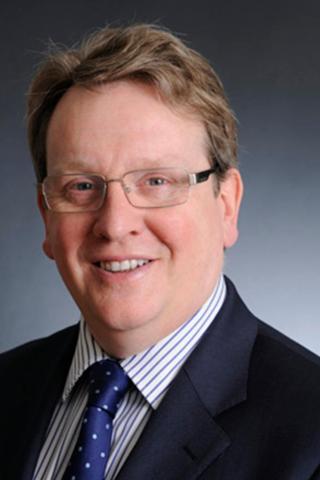Young guns can target wild frontiers
Rob Burgeman, investment management director at Brewin Dolphin

Each week we ask an expert for tips on how to invest £10,000. This is the final part of our four-week series on starting to save money in your twenties. It is also aimed at those who may wish to begin investing on behalf of their adult children, perhaps into a pension.

This week, Rob Burgeman, director of investment management at the adviser Brewin Dolphin, emphasises the importance of putting away money when you’re young.
“Anyone lucky enough to have £10,000 to invest in their twenties has the most valuable advantage imaginable when it comes to savings — time,” he said.
“Consider this: someone who invests £10,000 at the age of 25 and who achieves a return of 5% a year will have seen this sum grow to about £70,400 by the age of 65.
“Someone investing the same sum at the age of 45 — half the period — will see the funds grow to about £26,533. This illustrates clearly the power of compound returns over long periods.”
Burgeman, 52, who lives with his wife in Leigh-on-Sea, Essex, added: “A long timeframe before you need access to the money means you can afford to take a more adventurous approach to investing the funds and focus on longer-term trends.
“The three golden rules of investment still apply, though: diversification, diversification, diversification. With that in mind, here is how I’d split my £10,000.”
Fundsmith Equity (up 24% over a year)
I would start by allocating half my £10,000 here. Terry Smith is the architect of the fund and the primary decision maker. He has had a long and sometimes controversial career but has been successful throughout.
Fundsmith Equity applies a stringent screening process to find high-quality businesses that can offer a high return.
It will not invest in sectors such as banks, insurance, energy, utilities, biotech and unproven technology. Sectors it does favour include consumer staples such as Pepsi and Walker’s, medical suppliers such as Johnson & Johnson and Stryker Corporation, and technology stalwarts such as Microsoft.
Given this narrow list of options, the fund is highly focused at 20-30 stocks with a very low level of turnover.
Fundsmith Equity will provide some long-term stability for the overall portfolio. The annual charge is 1%, although different charges may apply depending on which investment platform you use.
I would allocate my remaining £5,000 equally between the five more adventurous funds below. The point about charges applies to these too.
BlackRock Frontiers Investment Trust (up 30% over a year)
The investment trust structure is ideal for gaining exposure to frontier markets. It is basically a company, meaning its shares can be bought and sold as quickly as any other company’s. This one invests in areas that are largely unavailable to private investors. From Pakistan to Peru, if a stock exchange is available then it is on the fund’s radar (but not necessarily in its portfolio).
The annual charge is high, at about 1.5%, but this largely reflects the costs of researching and dealing in some fairly esoteric parts of the world.
Polar Capital Technology Trust (up 30% over a year)
This is another investment trust. It puts its clients’ money in a diverse portfolio of tech companies around the world. It tries to ensure a range of business sizes, from large to medium to small, rather than focusing on “yesterday’s heroes”. Top holdings include Alphabet, the parent company of Google, and Splunk, an American software developer.
The annual charge is 1.1%.
HarbourVest Global Private Equity (up 23% over a year)
This fund has a diversified portfolio of private companies covering a multitude of sectors and geographies. Private equity funds typically have access to areas of the market in which others may struggle to gain a foothold — whether it is smaller, dynamic growth companies or businesses undergoing a restructuring. They are particularly well-suited to long-term investors seeking capital growth.
HarbourVest has more than 30 years of experience running $42bn (£33bn) of assets in the relatively complex sector that is private equity.
The ongoing charge is 0.33% a year.
Allianz Global Agricultural Trends (up 13% over a year)
This fund concentrates on firms that stand to benefit from developments in agriculture and from an increasing demand for food and agricultural products around the world. It also invests in those involved in the processing, production and distribution of food. This area is likely to be transformed over the next 50 years as the global population rises.
The annual charge is 1.08%.
Janus Global Life Sciences (up 7.6% over a year)
This fund focuses on trends in global healthcare, investing in high-quality or improving businesses that are trading at a discount to what the managers believe are their true value.
The healthcare sector presents a growth opportunity for long-term investors, with demand driven by both developed and emerging markets. Ageing populations will drive a higher healthcare spend in the developed world, for example.
Additional growth in emerging markets will come as a result of rising living standards and increased illnesses — such as diabetes and heart disease — resulting from a more westernised diet.
The annual charge is 0.8%.








